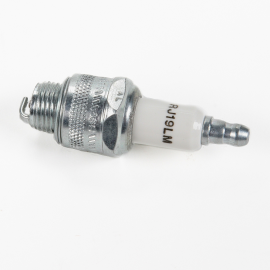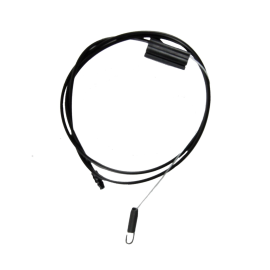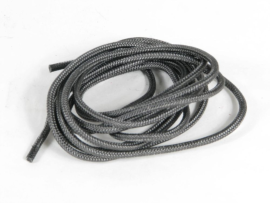Lawn mower won't start troubleshooting video: spark plug and ignition problems video


If your lawn mower doesn't start, the problem could be with the spark plug or ignition system. This video from Sears PartsDirect shows how to troubleshoot and fix spark plug and ignition problems, including using a spark plug tester to test the spark plug.
The video also shows how to use a multimeter to check for a short in the wire that connects the stop switch to the ignition coil, and it walks you through how to check the ignition coil and flywheel. Once you figure out the problem, we show you how to fix it. You'll be cutting your grass in no time.
Hi, this is Wayne, from PartsDirect. Today we’re going to talk about some troubleshooting steps to determine why your lawn mower spark plug won't fire.
Although walk-behind mowers can vary in appearance from this Craftsman 21-inch mower, they all work pretty much the same.
These are the tools and supplies you might need, depending on the problem.
Tools or equipment needed
Ratchet and deep socket
Spark plug
Spark plug tester
Nut driver set
Multimeter
Stop wire
Clamp
Feeler gauge
Wood block
Socket set
Flywheel puller
Hammer
Flywheel key
Work in a well-ventilated area free of open flame or sparks.
Spark plug
Start by checking the condition of the spark plug. Pull off the spark plug wire and remove the spark plug, using a ratchet fitted with a deep socket. Look for carbon or oil buildup on the spark plug electrode that could prevent sparking. Also, look for a crack in the ceramic insulator. If you see excessive buildup or a crack, replace the spark plug.
If the spark plug looks good, reinstall it and then connect a spark plug tester to check the ignition system. Release the rope from the mower handle so it's in reach when testing the spark plug. Connect the tester boot to the spark plug and connect the spark plug wire to the other end of the tester. Clamp the bail control bar down to release the blade brake. Pull the starter rope and see if the tester sparks.
If the tester does spark, then the engine could have a fuel or compression problem. Check out this video to troubleshoot those issues.
Stop wire
If the tester doesn't spark, then you'll need to check the ignition system.
Disconnect the spark plug tester and leave the spark plug wire disconnected.
Remove the screws from the blower housing and pull it off the engine to access the ignition system.
We'll check the stop wire first. The stop wire connects the engine stop switch to the ignition coil. It diverts the spark plug current to the metal engine block when you release the bail control bar so the spark plug quits firing and the engine stops. If the stop wire frays and shorts to the engine before connecting to the stop switch, the spark plug will never get electrical current to spark.
The stop wire is difficult to visibly check, so we'll check for a short in the stop wire using a multimeter. Clamp the bail control bar down to disengage the stop switch. Set your multimeter to measure ohms of resistance. Disconnect the stop wire from the ignition coil and touch one meter probe to the stop wire spade.
Touch the other meter probe to the engine block. The meter should read infinite resistance if the stop wire is intact. If the meter measures resistance or reads 0 ohms, then you'll need to replace the stop wire.
Plug the stop wire back into the ignition coil if the wire is okay.
Ignition coil
Next we’re going to check the air gap between the ignition coil and the flywheel.
When you pull the starter rope, the ignition coil produces electric current as magnets in the flywheel spin past the ignition coil. The ignition coil won't produce any current if it's too far away from the magnets.
Use a feeler gauge to measure the gap between the ignition coil and flywheel. You should measure between .006-inch and .014-inch. Reduce the ignition coil gap if it's wider than .014-inch. To do this, rotate the flywheel until the magnets are in front of the ignition coil.
Insert the .010-inch feeler gauge leaf. Loosen the mounting screws until the magnets pull the ignition coil against the leaf. Then, tighten the mounting screws. Rotate the flywheel to free the leaf and pull it out.
If the ignition coil gap is correct, then you'll need to replace the ignition coil because it isn't sending current to the spark plug. Here's a video that shows you how.
Flywheel key
If the engine misfires, backfires, sputters or jerks the starter rope out of your hand when you try to start it, the flywheel key could be broken. A broken flywheel key disrupts the ignition timing because the magnets aren't passing the ignition coil in synchronization with piston movement.
By design, the flywheel key shears off to protect the engine from damage if you hit a rock or tree stump while mowing.
Remove the flywheel and check the flywheel key.
Tip the mower onto its side with the air filter up and wedge a block of wood between the mower blade and the housing to keep the crankshaft from turning when you loosen the flywheel nut.
Remove the flywheel nut, washer and recoil starter cup.
To protect the crankshaft thread, rethread the flywheel nut so it's flush with the end of the crankshaft.
Install a flywheel puller on the flywheel.
Screw the flywheel puller nuts down to lift the flywheel.
Tap the top of the flywheel with a hammer to break it free from the crankshaft.
Remove the flywheel puller and flywheel nut.
Remove the flywheel and check the flywheel key.
Replace the flywheel key if it's broken. Here’s a video to show you how.
Once you replace the broken flywheel key, the ignition should work and the mower should start.
I hope this video helps you out today. Be sure to check out our other YouTube videos. Subscribe if you like them, and you’ll be among the first to know when we upload new repair videos.
Symptoms for gas walk-behind mowers
Choose a symptom to see related walk-behind mower repairs.
Main causes: drive control cable failure, worn or broken drive belt, bad transmission, broken drive wheel…
Main causes: engine needs tune up, dirty or clogged carburetor, damaged flywheel key…
Main causes: dirty carburetor, bad spark plug, clogged air filter, engine choke problems, clogged gas cap vent…
Main causes: damaged cutting blade, loose cutting blade, damaged flywheel key, engine needs tune up…
Main causes: stale gas, engine needs tune up, bad spark plug, dead battery, bad recoil starter, faulty safety switch, ba…
Main causes: uneven wheel height settings, damaged wheel, dull or damaged cutting blade…
Repair guides for gas walk-behind mowers
These step-by-step repair guides will help you safely fix what’s broken on your walk-behind lawn mower.

How to replace a lawn mower spark plug
Take a few minutes to replace the spark plug during your lawn mower's annual tune-up or if the spark plug is burnt or cr…

How to replace a lawn mower drive cable
The drive cable engages the transmission to spin the drive wheels and move the mower across the grass. Replace the drive…

How to replace a lawn mower starter rope
These step-by-step instructions show how to replace a broken starter pull rope on a walk-behind lawn mower.…
Articles and videos for gas walk-behind mowers
Use the advice and tips in these articles and videos to get the most out of your walk-behind lawn mower.

Learn about all the convenient features on our Sears PartsDirect website that make your parts purchases easier.…

Get answers to frequently asked questions about Sears and Sears PartsDirect.…

Find out how to test and fix problems with the spark plug, stop wire, ignition coil and flywheel.…